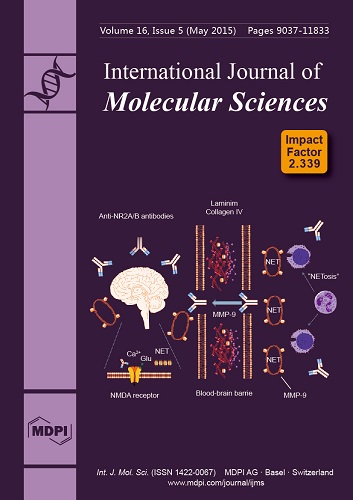The Small Tailed Han sheep and Hu sheep are two prolific local sheep in China. In this study, the polymorphisms of
BMPR-IB (Bone morphogenetic protein receptor IB),
BMP-15 (Bone morphogenetic protein 15) and
FSHR (follicle stimulating hormone receptor) were investigated to check whether
[...] Read more.
The Small Tailed Han sheep and Hu sheep are two prolific local sheep in China. In this study, the polymorphisms of
BMPR-IB (Bone morphogenetic protein receptor IB),
BMP-15 (Bone morphogenetic protein 15) and
FSHR (follicle stimulating hormone receptor) were investigated to check whether they are associated with litter size in Small Tailed Han sheep and Hu sheep. Consequently, three polymorphisms,
FecB mutation in
BMPR-IB (c.746A>G),
FecG mutation in
BMP-15 (c.718C>T) and the mutation (g. 47C>T) in
FSHR were found in the above two sheep breeds with a total number of 1630 individuals. The single marker association analysis showed that the three mutations were significantly associated with litter size. The ewes with genotype
FecBB/
FecBB and
FecBB/
FecB+ had 0.78 and 0.58 more lambs (
p < 0.01) than those with genotype
FecB+/
FecB+, respectively. The heterozygous Han and Hu ewes with
FecXG/
FecX+ genotype showed 0.30 (
p = 0.05) more lambs than those with the
FecX+/
FecX+ genotype. For
FSHR gene, the ewes with genotype
CC had 0.52 (
p < 0.01) and 0.75 (
p < 0.01) more lambs than those with genotypes
TC and
TT, respectively. Combined effect analyses indicated an extremely significant interaction (
p < 0.01) between the random combinations of
BMPR-IB,
BMP-15 and
FSHR genes on litter size. In addition, the Han and Hu ewes with
BB/G+/CC genotype harbor the highest litter size among ewes analyzed in current study. In conclusion,
BMPR-IB,
BMP-15 and
FSHR polymorphisms could be used as genetic markers in multi-gene pyramiding for improving litter size in sheep husbandry.
Full article






